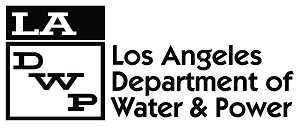LOS ANGELES — A moratorium was proposed by City Councilman Mitch Englander on Friday, November 22 that would prevent the Department of Water and Power (DWP) customers from experiencing service disconnects from erroneous bills.
Motion 13-1475-S4 aims to prevent the DWP from possibly disconnecting service from people who have received incorrect bills due to the faulty launch of the department’s Customer Information Service (CIS) overhaul. In addition, the motion also requests that the DWP provide a status update to the City Council of the corrective measures being taken to improve the service every 30 days.
Councilman Englander said in a statement that he has received “an unprecedented level of phone calls” from his constituents who have reported inaccuracies with their bill statements from the DWP. Taking into account that some people who have called the customer support line have been placed on hold for close to 45 minutes, he also suggested that a callback system of sorts be implemented to alleviate the situation.
“While the DWP is attempting to resolve these problems, it seems only appropriate that a moratorium be placed on disconnections,” Councilman Englander said.
The motion is another bump in the launch of the revamped CIS that was fully unveiled on September 2. The redesign of the 39 year-old system has been in the works since August 2010, and the past couple of months have seen an increase in customer complaints stemming from the incorrect bills and long hold times.
A presentation about the “Post Go-Live” status of the CIS launch from an Energy and Environment Committee Meeting that was held on November 20 shed some light on the system itself as well as the problems surrounding it.
The new CIS purportedly handles both the Meter-to-Cash process and all “customer-facing operations,” which includes billing, payments, and collections. The DWP claimed in the presentation that the system would take about 18-24 months to fully stabilize with the majority of the issues identified and corrected within the first full bill cycle, or 60 days.
The presentation also admits that customer wait times are far too long, and that there are indeed instances where some customers are billed incorrectly, though the department claims that these number are between three and five percent of all bills generated. A graph in the presentation reveals a higher than average number of daily calls to the Customer Contact Center (CCC) since mid-October, while another graph shows that average wait times for customer calls to the CCC increased greatly also since mid-October, in some cases approaching 45 minutes instead of the usual 10-15 minutes. Customer service representatives learning the new system and certain systems not working completely are cited as reasons for the long hold times.
In addition, the DWP also reveals that 18 percent of the bills generated between September and October were estimated based on three rules: estimations must be derived from the same period from the year before; estimations must be derived from the prior period of the same year; or estimation must be derived from the average of usage class, like residential or commercial. The third reason is mostly attributed to possibly being the biggest reason for higher-than-average bills. The reason for these estimates are due to meter reads not being read because the new routing system was being optimized and the reads not making it to the billing process.
A statement from the DWP apologizes for the problems the CIS has so far caused and suggests to affected customers a number of different ways to help fix their situation. Customers can use the self-serve phone service for payments and bill-pay extensions at 1-800-DIALDWP, where it is further suggested that calls should be placed on the weekends between 7 a.m. and 10 p.m. to avoid high call volumes. They can also use the newly introduced “Virtual Hold” technology that allows customers to designate a certain time to have DWP representatives call back instead of having to wait on hold.






